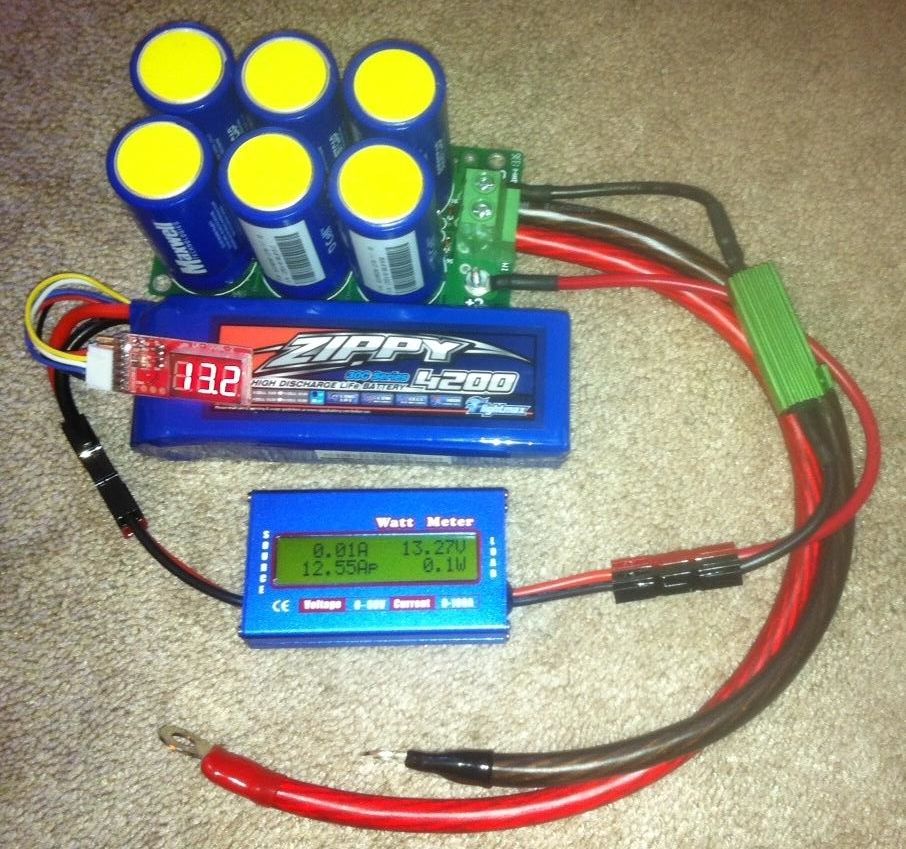I tested the configuration of my supercapacitor / LiFePO4 in the TSX and recorded various parameters when starting the car.
The
super capacitors are connected to the car with 4 awg cable and ring terminals. The bank of six 350 farad capacitors in series has a total effective capacitance of 58F at full charge (16v). However, the LiFePO4 battery only maintains a voltage of 13.3v, so the total capacitance is further reduced.
To protect the
4.2Ah LiFePO4 battery which only has a 2C charge rating, I have a
0.2 ohm 50W resistor connecting the negative lead of the battery to the super capacitor. The battery is in parallel with the supercap.
In line with the battery and super cap, I have two
watt meters that measure peak and cumulative amps for both charge and discharge. They draw 14mA each, which is significant considering the TSX has a parasitic draw of 42mA. Without the meters, the car could sit for about 4 days before the battery was drained. With the meters connected, I could only sit for 2.5 days.
First, I did 5 engine starts with the capacitors only and recorded peak amps, and voltage sag (minimum voltage reached while cranking). Each time I began cranking at around 12.5 volts.
Peak Cranking Amps - Voltage Sag
128A - - - - - - - - - - - 7.0v
212A - - - - - - - - - - - 7.2v
182A - - - - - - - - - - - 6.2v (failed to start)
184A - - - - - - - - - - - 6.6v (barely started)
192A - - - - - - - - - - - 7.7v
180A average - - - - - - 6.9v average
Next, I connected the LiFePO4 battery to the supercaps to determine the peak amps during start and charge for the battery only. The 0.2 ohm resistor limited the current of the battery, causing the supercap to do most of the work.
Note that these figures are for the battery only. The supercap is still drawing ~200A at start. Voltage sag was again measured at the capacitor and not the battery. Battery sag was minimal given the limited discharge. All starts performed near 13 volts.
Battery Cranking Amps - Battery Charging Amps - Capacitor Voltage Sag
-15.5A - - - - - - - - - - - +3.5A - - - - - - - - - - - - 8.4v
-16.2A - - - - - - - - - - - +3.5A - - - - - - - - - - - - 8.3v
-15.8A - - - - - - - - - - - +3.4A - - - - - - - - - - - - 8.4v
-14.3A - - - - - - - - - - - +2.9A - - - - - - - - - - - - 9.0v
-15.5A average - - - - - - +3.3A average - - - - - - - 8.5v average
